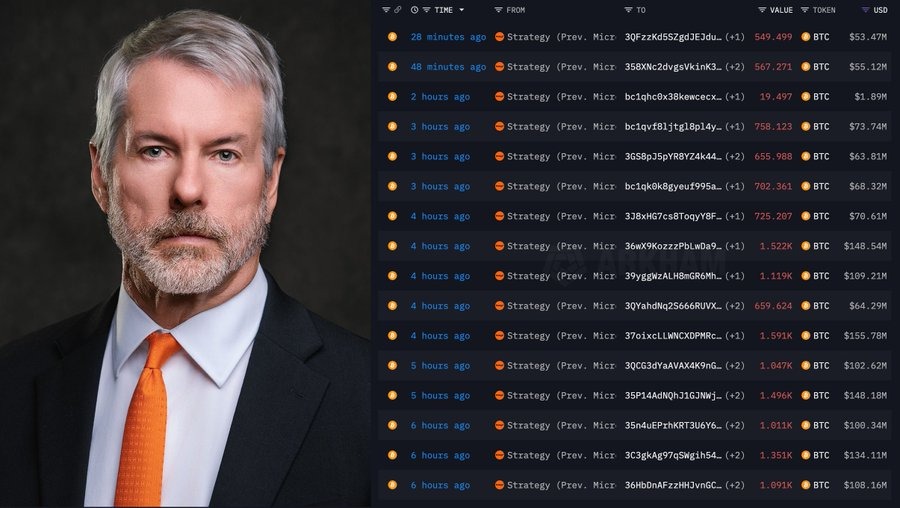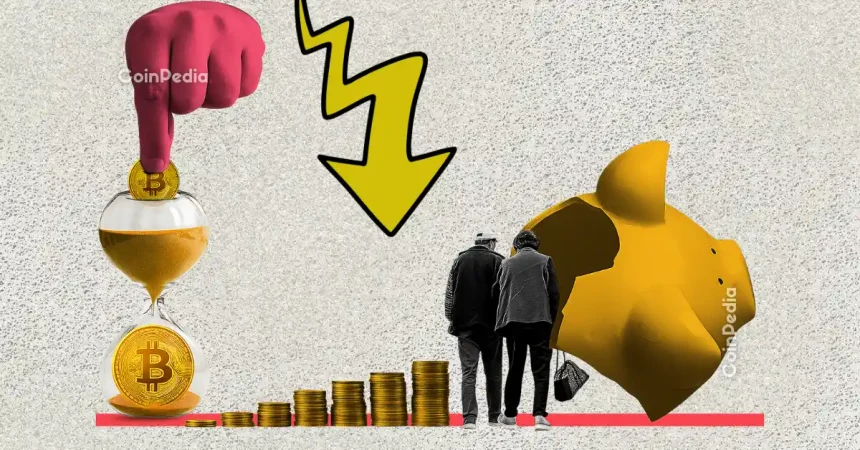Bitcoin has fallen below $97,000 once again, raising new fears across the market as more than $1.1 billion in long positions were liquidated within 24 hours. This marks the third time in a month that Bitcoin has slipped under this zone
. With sentiment weakening fast, the biggest question now dominating the market is simple: How low can Bitcoin really fall from here?
Analysts Identify Two Danger Zones Ahead
Crypto analyst Axel Adler Jr has highlighted two critical levels that could decide Bitcoin’s next major move, and both levels carry serious weight.
The first key support sits near $87,000, a zone identified using what Adler calls a “conservative Bitcoin valuation model.”
This model, scoring 95/100 in back testing, is based entirely on on-chain activity and explains 87% of Bitcoin’s price behavior. Because of this, the $87K level is viewed as a strong, fundamentally backed support.
But the real fear comes from the second major support level at $74,000, a zone analysts call the “panic level.” If Bitcoin falls this far, it would likely trigger a deeper emotional sell-off across the market.
Repeating Bear Signal From Past Cycles
Adding more concern, analyst Ted pointed out that Bitcoin is showing a familiar pattern seen in three major bear markets, 2014, 2017, and 2021.
In all three cases, the real downturn began right after a death cross, where the short-term moving average falls below the long-term one.
Ted warns that the same pattern is forming again in 2025, showing an almost identical setup. If history repeats, Bitcoin could be entering the early stage of another big correction.
MicroStrategy Suddenly Starts Selling Bitcoin After 2 Years
The panic grew even stronger after MicroStrategy, led by Michael Saylor, suddenly began selling Bitcoin for the first time in two years.
The company has reportedly dumped 33,000 BTC worth $3.2 billion, and on-chain data shows they are continuing to sell in small batches every few minutes.

This is shocking because MicroStrategy has always presented itself as Bitcoin’s biggest corporate believer. Their sudden shift from buyer to seller during a weak market has raised serious concerns.
What Next For Bitcoin?
For Bitcoin to avoid a deeper correction, it must reclaim the $100K–$105K zone soon.
If it fails, analysts warn the market could be forced to test $87K, and if panic accelerates, even $74K could come into play.
As of now, bitcoin is trading around $97,100, reflecting a drop of 5.8% seen in the last 24 hours.
Never Miss a Beat in the Crypto World!
Stay ahead with breaking news, expert analysis, and real-time updates on the latest trends in Bitcoin, altcoins, DeFi, NFTs, and more.
FAQs
Bitcoin is down due to rising liquidations, reduced spot demand, and large holders selling, which together increase fear and push prices lower.
Bitcoin must regain the $100K–$105K range to ease fear. A strong rebound in buying activity and stability in market sentiment would support recovery.
Yes. If Bitcoin fails to reclaim the $100K zone soon, momentum could weaken further and bring the $74K panic level into play.
Trust with CoinPedia:
CoinPedia has been delivering accurate and timely cryptocurrency and blockchain updates since 2017. All content is created by our expert panel of analysts and journalists, following strict Editorial Guidelines based on E-E-A-T (Experience, Expertise, Authoritativeness, Trustworthiness). Every article is fact-checked against reputable sources to ensure accuracy, transparency, and reliability. Our review policy guarantees unbiased evaluations when recommending exchanges, platforms, or tools. We strive to provide timely updates about everything crypto & blockchain, right from startups to industry majors.
Investment Disclaimer:
All opinions and insights shared represent the author’s own views on current market conditions. Please do your own research before making investment decisions. Neither the writer nor the publication assumes responsibility for your financial choices.
Sponsored and Advertisements:
Sponsored content and affiliate links may appear on our site. Advertisements are marked clearly, and our editorial content remains entirely independent from our ad partners.











